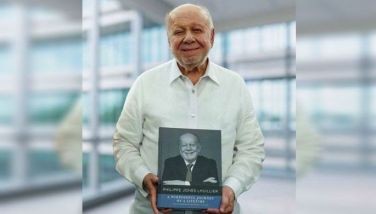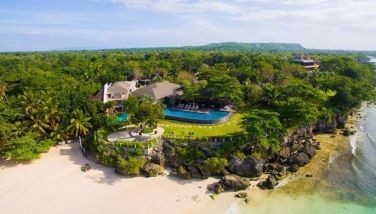The Philippines as sanctuary and refuge
Today in 1947, the UN General Assembly adopted Resolution number 181 (II) aimed to constitute and instruct a special committee to prepare for the consideration of the question of the future government of Palestine. Aside from being the only Asian country to support and vote for the partition of Palestine and the creation of the Jewish state, the Philippines was also elected, together with Bolivia, Czechoslovakia, Denmark, and Panama, as a member of the United Nations Commission on Palestine. As the nation that provided refuge to 1,315 European Jewish refugees fleeing Hitler between 1934 until the 1940s, our country has always been considered a haven and sanctuary for those escaping conflict and persecution, and even before formal immigration policies and became party to the 1951 Refugee Convention, Filipinos have long embodied the spirit of compassion, solidarity, and humanity, and we were among the first to offer asylum to successive waves of refugees fleeing persecution since the end of World War I, and even earlier.
Early hidden Jews from Spain fled to the Philippines to escape the Inquisition. Chinese migrants in the Spanish period and after the Chinese civil war escaped famine and Communist rule and found a new home --and prosperity-- in the Philippines. Even Jose Rizal’s Chinese ancestor, Domingo Lamco, fled to the Philippines because of a great plague in his hometown and his opposition to the Manchus.
The first large refugee group welcomed here were 800 Russians fleeing the dangers of the Socialist Revolution of 1917. Although many later migrated elsewhere, some settled in Manila or other areas in the country, with 250 migrating to Mindanao to work in abaca plantations.
In 1939, General Francisco Franco’s rise to power brought Spanish republicans to the Philippines to escape Spain’s fascist regime. European countries refused to issue them visas, forcing them to look to former colonies like Mexico, the Dominican Republic, and the Philippines, which accepted them.
From 1949 to 1953, another batch of Russians from China escaped Communist rule there and settled in Tubabao Island, Guiuan, Eastern Samar, because only the Philippines granted them asylum. Our open-door policy set a precedent for the amendment of the Displaced Persons Act of 1948.
More refugees found sanctuary here: 1.) From 1975 to 1992, 2,700 Vietnamese “boat people” fled their country due to the Vietnam War and admitted to and lived in refugee camps in Palawan, with many staying and marrying locals; 2.) The ayatollahs’ rise to power brought thousands of Iranian asylum seekers to the country, making them in the 1990s the largest population of refugees not of Indo-Chinese origin; from 1980 to 1994, nationals from Laos, Cambodia, and Vietnam escaped regime changes in their home countries; 600 refugees from Timor Leste in 2000 were given temporary protection during their country’s struggle for independence; and, more recently, we welcomed six Rohingya refugees as part of the Philippines’ pilot Complementary Pathways program, which offers an opportunity for a durable solution that provides select Rohingya youth with a safe and regulated avenue of admission and stay in the country through education to build better futures for themselves and their communities.
This year, there have been requests to accept Afghan and now Palestinian refugees, but while the welcoming spirit of Filipinos remains strong, these were met with opposition. Aside from the large number of Afghan refugees (50,000 as requested), there has also been the question of funding. While the UN and foreign governments have helped with the upkeep of refugees before, we have been burdened with the expense for these people. And, with the prices of basic commodities skyrocketing since 2022, many Filipinos want taxpayers’ money to help Filipinos, not foreigners.
Perhaps one of the reasons why the Jewish refuge in the Philippines in the 1930s remains memorable and a model of efficiency is due to the simple fact that their upkeep was shouldered by the Jewish community in Manila and various Jewish organizations worldwide. While Quezon’s government was open to helping financially, those involved in bringing European Jews to the Philippines made sure that their presence would not become a financial burden to the Filipinos.
We should be proud that our country has a long history of being a haven for the displaced and oppressed. But the Philippines of today is not the Philippines of Quezon’s time. The proliferation of cartels that have cornered almost every basic commodities in the country, no doubt with the involvement of the highest-ranking government officials, have made life harder for many Filipinos and it would be illogical, and immoral, to prioritize refugees (no matter how dire their need) while allowing our own people to go hungry.
- Latest























